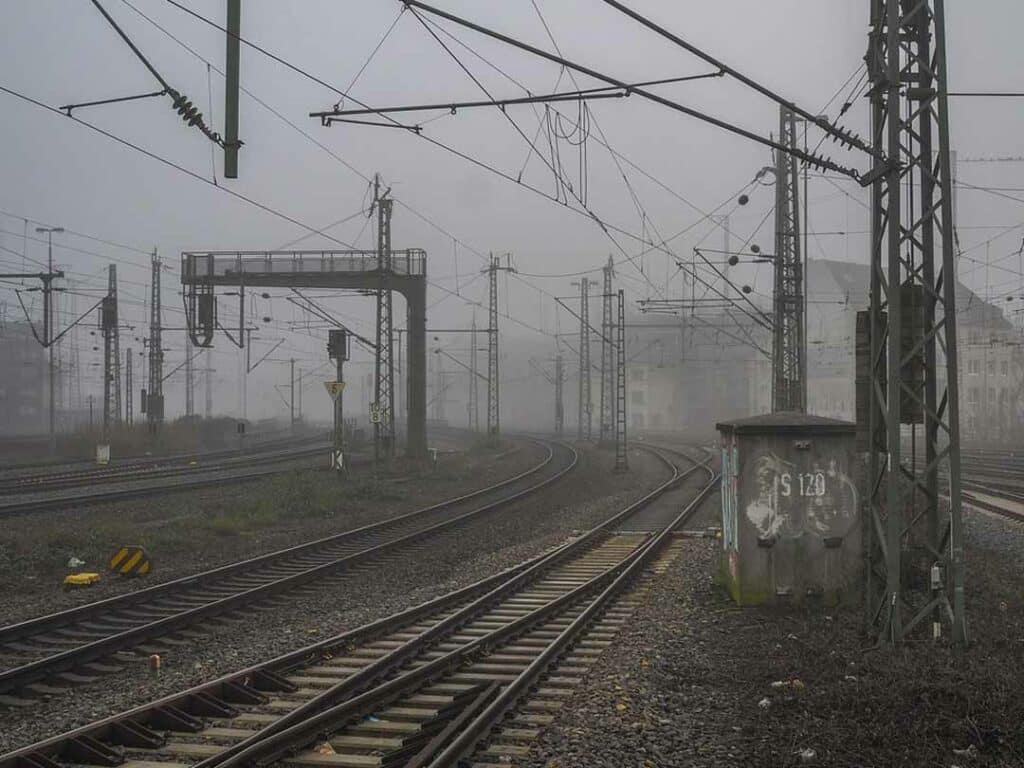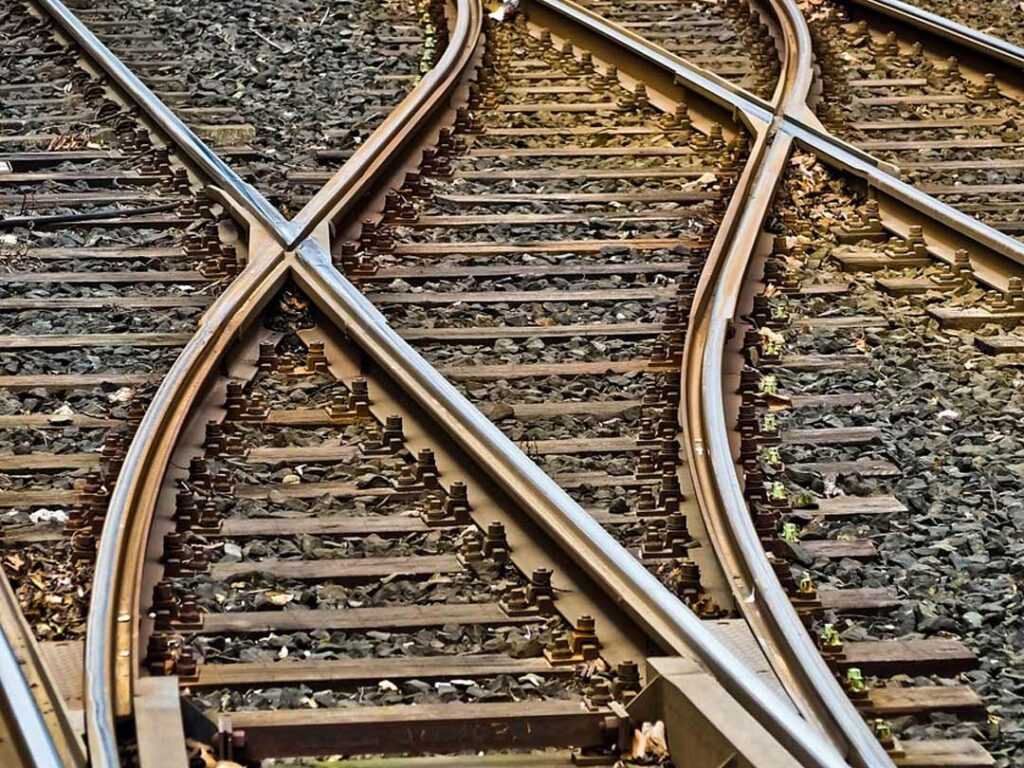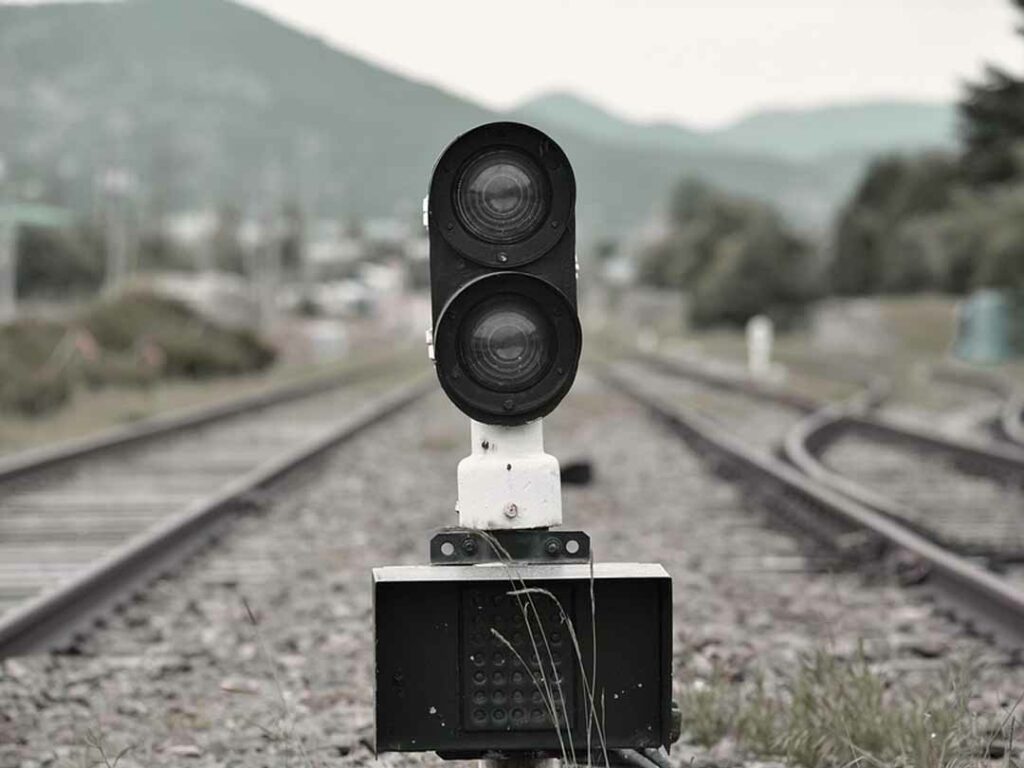What does the railway need power for?
Having a reliable and uninterruptible power supply is key for the functioning of the rail infrastructure across the UK. Power to the railway cannot simply ‘go down’. This can be quite a challenge with such a long and narrow infrastructure (20,000 miles of track and 2500 stations!) to get supply to, but why is rail power supply so important?
Power distribution provides a constant power supply many aspects of the rail infrastructure; Traction power is a standalone system that is used to power electric trains. Safety-critical infrastructure power is used for train control and signalling equipment such as signalling lights and level crossings. Non-safety critical infrastructure power is used for everything else including from station lighting to electric vehicle (EV) charge points within carparks.
Railway power supply must be reliable, safe, economical and user friendly.

Power distribution – how is infrastructure power supplied and distributed across the railway network?
What is the power distribution voltage on the railway network?
Rail power is supplied by the electricity supply network as with any household electricity, The only difference being, like places such as hospital operating theatres, any power disruption, no matter how small, must to be prevented.
Does the railway use direct or alternating current?
The infrastructure power is distributed using alternating current (AC) as it performs better over longer distances. However, the different train, control, signalling and support systems all use a mix of different voltages in both alternating current (AC) and direct current (DC).
Distribution Network Operator (DNO)
Electricity suppliers in the form of licensed distribution network operators supply power to the rail network via adistribution network operator (DNO) cubicle. A DNO cubicle consists of two parts. The first part is the DNO side where the incoming voltage of 230V single phase or, more typically, 400V three phase, passes through the DNO company’s metering equipment to an isolation point before being connected through to the second side. The second side is the Network Rail side and here a busbar and isolation switches are used to split out and distribute the power to one or more supply points.
RSP offers a wide range of quality distribution network operator (DNO) cubicles, which can be customised to fit exact requirements. Our DNO products are built and tested to BS EN61439 and BS7671 using Network Rail PADS approved equipment and come with a fully documented client focused factory acceptance test.
Principal supply point (PSP)
After the DNO cubicle most supplies are fed to a principal supply point or PSP. At the principal supply point the incoming voltage of 400V gets transformed up, typically to 650V although this may vary.
Other power supply sources are used at the PSP as backup in case of interruption to mains supply from the DNO. This includes standby generators and/or a high voltage three-phase traction power system as well as an uninterruptable power supply which can convert its DC output to AC when needed to prevent interruption when switching between the mains power and back up power.
RSP offers a wide range of quality railway Principal Supply Points products, which can be customised to fit exact requirements. Our PSP products are built and tested to BS EN61439 and BS7671 using Network Rail PADS approved equipment and come with a fully documented client focused factory acceptance test.
Functional supply point (FSP)
After the PSP the 650V power is distributed in feeder cables along the trackside to local supply points called Functional Supply Points. Here at RSP, we also supply functional supply point power systems which sit next to the railway, providing power supply for trains, signalling and other electrical equipment.
These FSPs contain transformers and rectifiers to modify the supply voltage from the 650v to one or more lower voltage supplies, typically 110v ac.
All our FSP switchgear components conform to NR/L2/SIGELP/27409 Issue 2 and are available in both Class I and Class II configurations.
Location cases (LOCs)
The local signalling equipment and systems are all housed in trackside cabinets known as Location cases or LOCs. These are fed power from the Functional supply points and often contain rail signalling equipment to identify the location of trains, control trackside signals and switch points. RSP supply LOCs made from mild steel, stainless steel and glass reinforced plastic (GRP) to a variety of criteria and all to Network Rail standards.
Lighting Control Cubicles (LCC)
In addition to the safety critical infrastructure the railway has many other non-safety critical systems requiring power. This includes station lighting. RSP offers a wide range of quality Lighting Control Cubciles. These cubicles can be fed via a DNO or more typically are fed from a local 230V supply. The lighting is typically fed at either 230v or 110v operation and required automatic twilight sensing and switching controls. In addition, LCCs can be made to allow for an emergency generator supply to be connected during power cuts.
How safe is power supply along the rail infrastructure?
Since the release of special inspection notice 119 (SIN119), there has been a focus on ensuring functional supply points pose no risk of electrocution to either the public or the rail workers.
Network Rail were required to undertake remedial work and adapt its 650v location cabinets (LOCs), a large focus of which was earthing these LOCs correctly.

Earthing the railway
The rail industry in the UK have traditionally used the IT earthing system. In this system the transformer’s output is isolated from the electrical Earth but all exposed conductive parts have a local direct connection to the electrical Earth. This system, however, has failed to trigger protective devices sufficiently and therefore is no longer considered safe as it potentially exposes workers and members of the public to excessively high voltages and risk of electric shock.
In order to improve safety as well as mitigate the possibility of dangerous electrical faults across the rail infrastructure, Network Rail had to ensure the LOCs and FSPs receiving 650v supply were suitably earthed and bonded and Perspex screens put in place over the electrical connections underneath the metal casing to reduce the level of accessible voltage.
Maintenance processes have also been established so that the safety of these LOCs can be regularly assessed to further reduce the likelihood of any serious injury or accident.
Class II power supply
In response to SIN119, class II power supply equipment was developed by the UK rail industry. Class II power supply equipment is double insulated to protect against electric shock instead of automatically disconnecting the power supply. Class II systems eliminate the risks associated with second Earth faults as well as preventing cause dangerous accessible high voltage caused by first Earth faults and reducing signalling outages.
As well as being double insulated Class II power supply systems help to make maintenence more simple through their use of fault location devices, and insulation monitoring.
Here at RSP our FSPs and ASPs are all available designed for use with Class II power supply system. Speak to a member of our team if you have any rail signalling power questions, we will be more than happy to be of assistance.
Fail safe signalling system
The UK rail infrastructure has a fail safe system in place due to the severity of any accidents that would be caused by failed signalling, for example at level crossings or trains approaching each other. This means that, should any signalling cable be compromised, that any trains on the affected section of railway will be stopped.
Thefts impacting signalling power
Network Rail report that theft of signalling cable and overhead wire electrical equipment costs the country millions each year. Not only is it expensive when it comes to replacement but, due to the safety implications of failed signalling, the fail safe method means overhead wire theft can cause severe delays on both passenger and freight trains, whilst the signalling is restored.
Anti-theft marker cabling is being used to reduce cable thefts of power and signalling cable but cannot alone prevent railway thieves.

